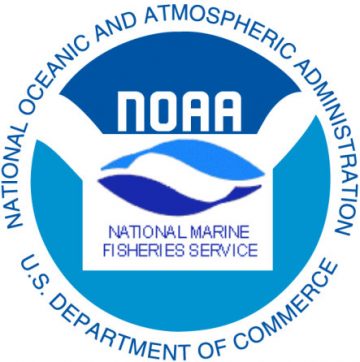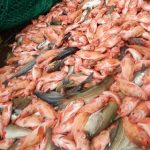Ecosystem-Based Fishery Management Policy and Roadmap – Its your duty to comment!
 Resilient, productive ocean fisheries are critical to our economy and way of life. Managing these fisheries over the long-term means taking into account more than just one species at a time. It requires a holistic, science-based approach that looks at the entire ecosystem. This approach is known as Ecosystem-based Fisheries Management (EBFM). NOAA Fisheries has developed an agency-wide EBFM policy, which outlines a set of principles to guide our actions and decisions over the long-term. It directs continued progress toward development and implementation of EBFM approaches. It also ensures our commitment to incorporate EBFM into the agency’s resource management decisions. NOAA also recently released a EBFM draft “road map” to guide implementation of the EBFM policy over the next five years. The road map outlines actions we can take now to further the policy’s 6 guiding principles: Implement ecosystem-level planning, 1.Advance understanding of ecosystem processes 2. Assess risks and vulnerabilities 3. Explore trade-offs 4. Incorporate ecosystem considerations into management advice 5. Maintain ecosystem resilience and social well-being Interested parties can send their comments on the draft road map no later than October 15, 2016 to Heather.Sagar@noaa.gov and Jason.Link@noaa.gov. Related Links: What is Ecosystem-based Fisheries Management? What are we already doing? 6 Myths of Ecosystem-based Fisheries Management Related Resources: Gulf of Mexico Marine Ecosystem – Video Link to the notice 15:38
Resilient, productive ocean fisheries are critical to our economy and way of life. Managing these fisheries over the long-term means taking into account more than just one species at a time. It requires a holistic, science-based approach that looks at the entire ecosystem. This approach is known as Ecosystem-based Fisheries Management (EBFM). NOAA Fisheries has developed an agency-wide EBFM policy, which outlines a set of principles to guide our actions and decisions over the long-term. It directs continued progress toward development and implementation of EBFM approaches. It also ensures our commitment to incorporate EBFM into the agency’s resource management decisions. NOAA also recently released a EBFM draft “road map” to guide implementation of the EBFM policy over the next five years. The road map outlines actions we can take now to further the policy’s 6 guiding principles: Implement ecosystem-level planning, 1.Advance understanding of ecosystem processes 2. Assess risks and vulnerabilities 3. Explore trade-offs 4. Incorporate ecosystem considerations into management advice 5. Maintain ecosystem resilience and social well-being Interested parties can send their comments on the draft road map no later than October 15, 2016 to Heather.Sagar@noaa.gov and Jason.Link@noaa.gov. Related Links: What is Ecosystem-based Fisheries Management? What are we already doing? 6 Myths of Ecosystem-based Fisheries Management Related Resources: Gulf of Mexico Marine Ecosystem – Video Link to the notice 15:38
















































Hopefully these things will be considered because they need to be taken into account. 1.Advance understanding of ecosystem processes – animal rights activist react on emotions when it comes to “saving” anything then make the science fir their feelings and not the logic that is required.
2. Assess risks and vulnerabilities – the overpopulation of species such as mammals may be great for a time but with time the balance starts to tip the other way. This is what as happened with the seal population. They are everywhere and to ignore their impact at these numbers only grow exponentially if they remain unmanaged. Yes, there may be one or two specie of seal that are endangered. 10 million seals are too many and nearly everywhere on the planet a culling needs to happen and markets needs to open so they are not wasted.
3. Explore trade-offs – this should include seals pelts and the meat to balance the eco-systems and better the lives of many.
4. Incorporate ecosystem considerations into management advice – considerations that the seals are damaging and wrecking havoc, the worst thing is the numbers continue to increase. The herd is out of control with the way markets currently stand.
5. Maintain ecosystem resilience and social well-being. The social stigma of being a seal hunter or a producer of seal products brought on by animal rights activist is causing everything from family disassembly to suicide. The racial divide being pushed on us by ara’s is so the animal rights agenda/business to garner funds. Animal rights is a big business. The biggest thing is that even those who know and think logically cave into the ara pressure. Almost to the point that it makes one consider if it is actually a mafia where people are being fleeced to join or pay. I hope this is some of the things considered.